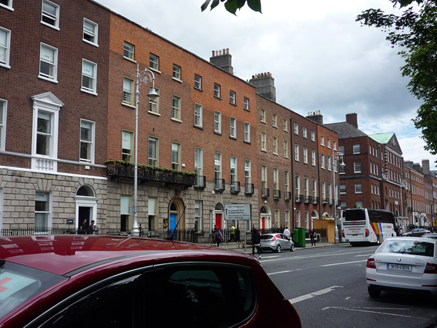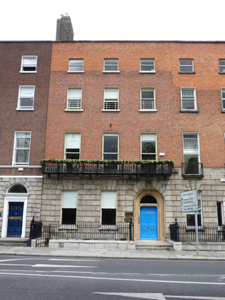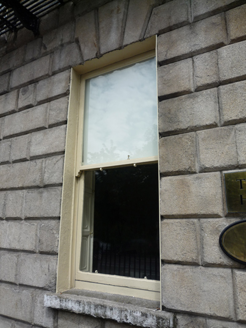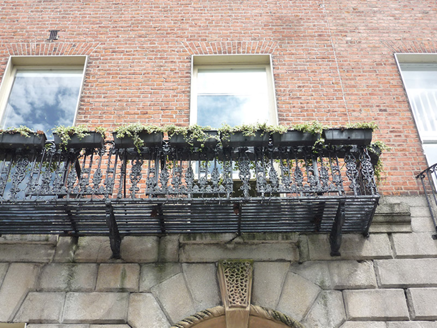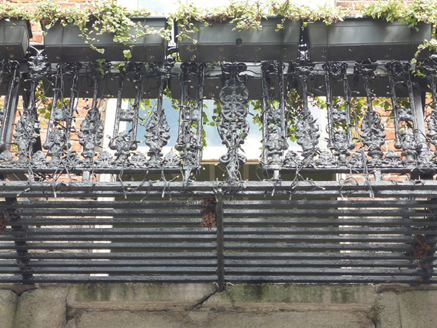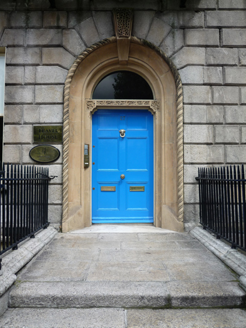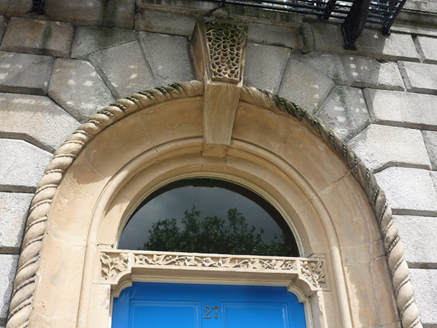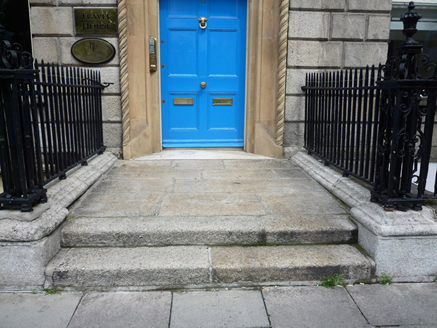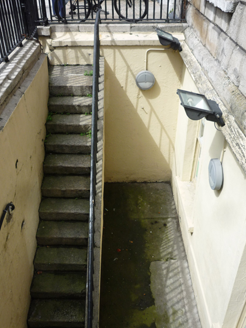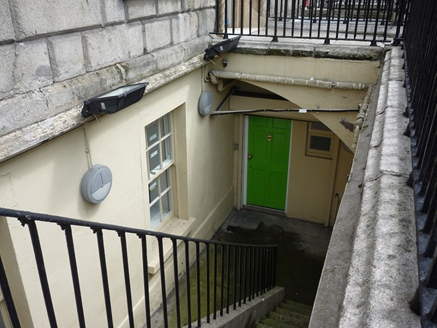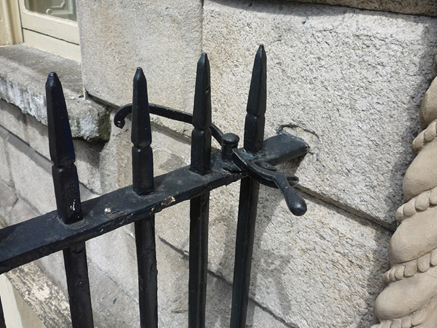Survey Data
Reg No
50100374
Rating
Regional
Categories of Special Interest
Architectural, Artistic
Original Use
House
In Use As
Office
Date
1765 - 1905
Coordinates
316794, 233611
Date Recorded
29/07/2016
Date Updated
--/--/--
Description
Attached three-bay four-storey former house over basement, built 1767 as unequal pair with No. 28, and altered c. 1900, having flat-roofed two-storey addition to rear. Now in office use. Natural slate roof, pitched to front part, behind reconstructed red brick parapet with masonry coping, and rear having shared hipped roof to east and hipped roof to west. Shared brick chimneystacks to west party wall with yellow clay pots, and concealed rainwater goods. Flemish bond red brick walling, refaced to top floor, granite rusticated ground floor on splayed granite plinth, and painted rendered basement walling; brick walling to rear. Square-headed window openings, diminishing in height to upper floors, with painted rendered reveals, painted granite sills and timber sliding sash windows with horns, six-over-six pane to basement and one-over-pane to floors above; generally one-over-one pane and two-over-two pane to rear, with single three-over-three pane and single one-over-one pane to top floor, and with petal fanlight to round-headed stairs window. Full-width ornate cast-iron balcony to first floor, and wrought-iron guard-rails to second floor. Round-headed entrance doorway with carved sandstone doorcase having deep cavetto-moulded architrave with cable-moulding, vermiculated key block, plain fanlight, shouldered sandstone lintel cornice with foliate carvings and six-panel timber door with weatherboard and brass furniture. Door opens onto concrete platform bridging basement with two steps to street level. Basement area enclosed by wrought-iron railings with decorative wrought and cast-iron corner posts on moulded granite plinth. Separate entrance to masonry staircase and wrought-iron handrail accessing basement, and with timber panelled door providing internal access below bridged platform. Interior noted by Casey as retaining some original joinery and plasterwork, and good nineteenth-century decoration to large first floor rooms, entrance and stair halls. Rear of plot has carparking, recent three-storey brick-faced block with forecourt and brick boundary wall all shared with No. 26.
Appraisal
No. 27 Merrion Square was built by John Ensor, while George Ensor built the adjoining no.28, the pair creating a cohesive seven-bay frontage. The pair have an unusual plan, the centre bay is shared, containing a service stair for each house. Interior substantially altered but original joinery and plasterwork survives. Like much of the north side of the Square, nos.27-28 have granite rustication to the ground floor, but they are the last in the row to have this treatment, likely because the Fitzwilliam quarry, from which the stone was sourced was closed in 1770. The relative plainness of the well-balanced façade is relieved by the decorative cast-iron balconettes and setting features, and by the skillfully carved sandstone doorcase. Despite fabric alterations, No. 27, makes a strong contribution to the early character and architectural significance of the square. It was built as part of the original development of the Georgian square. Laid out as part of the Fitzwilliam Estate, the square is one of the best-preserved Georgian streetscapes in Ireland. The north, east and south sides of the square are lined with terraced houses of eighteenth and nineteenth-century date, while the west side is terminated by the garden front of Leinster House. The houses maintain a relatively uniform building height and design, attributed to standards promoted in Fitzwilliam's leases. Individuality was introduced through the design of doorcases, ironwork and interior decorative schemes.
